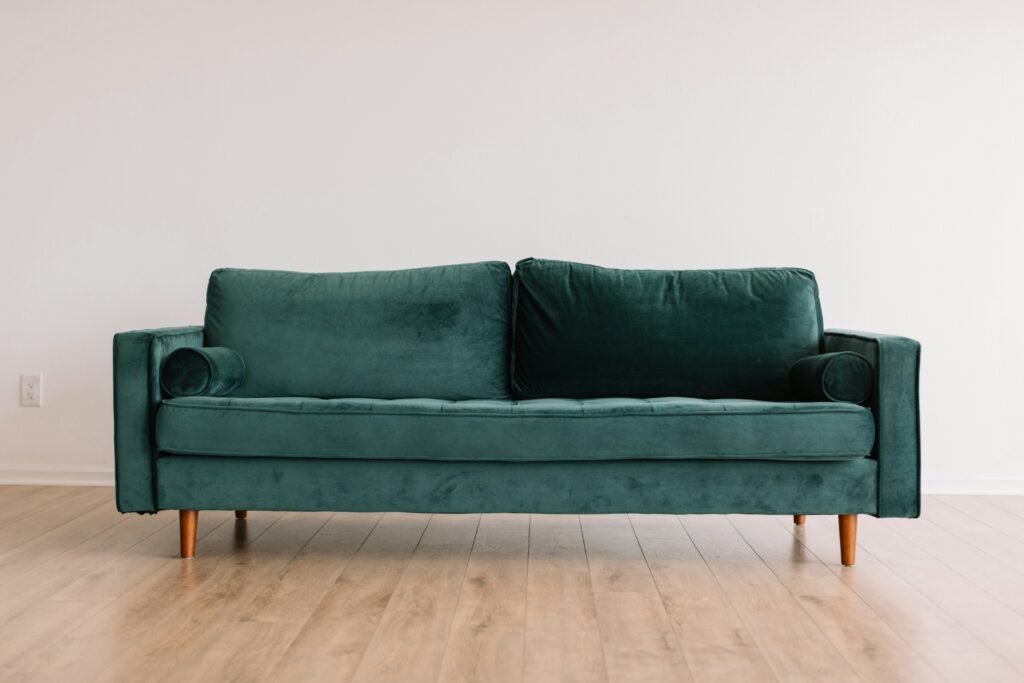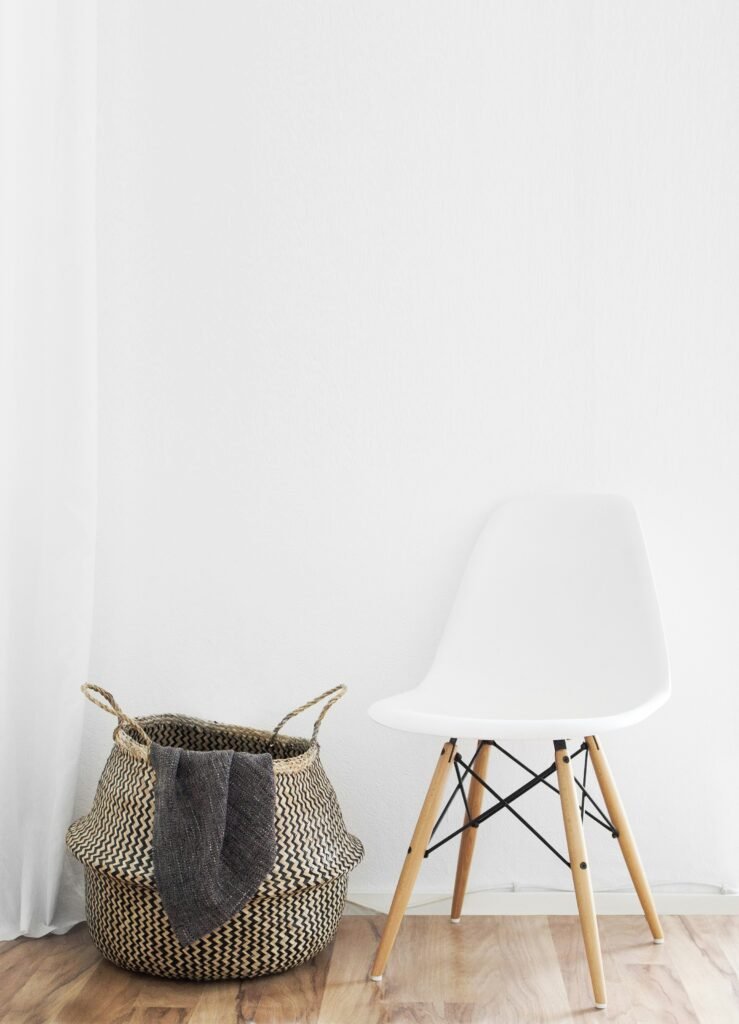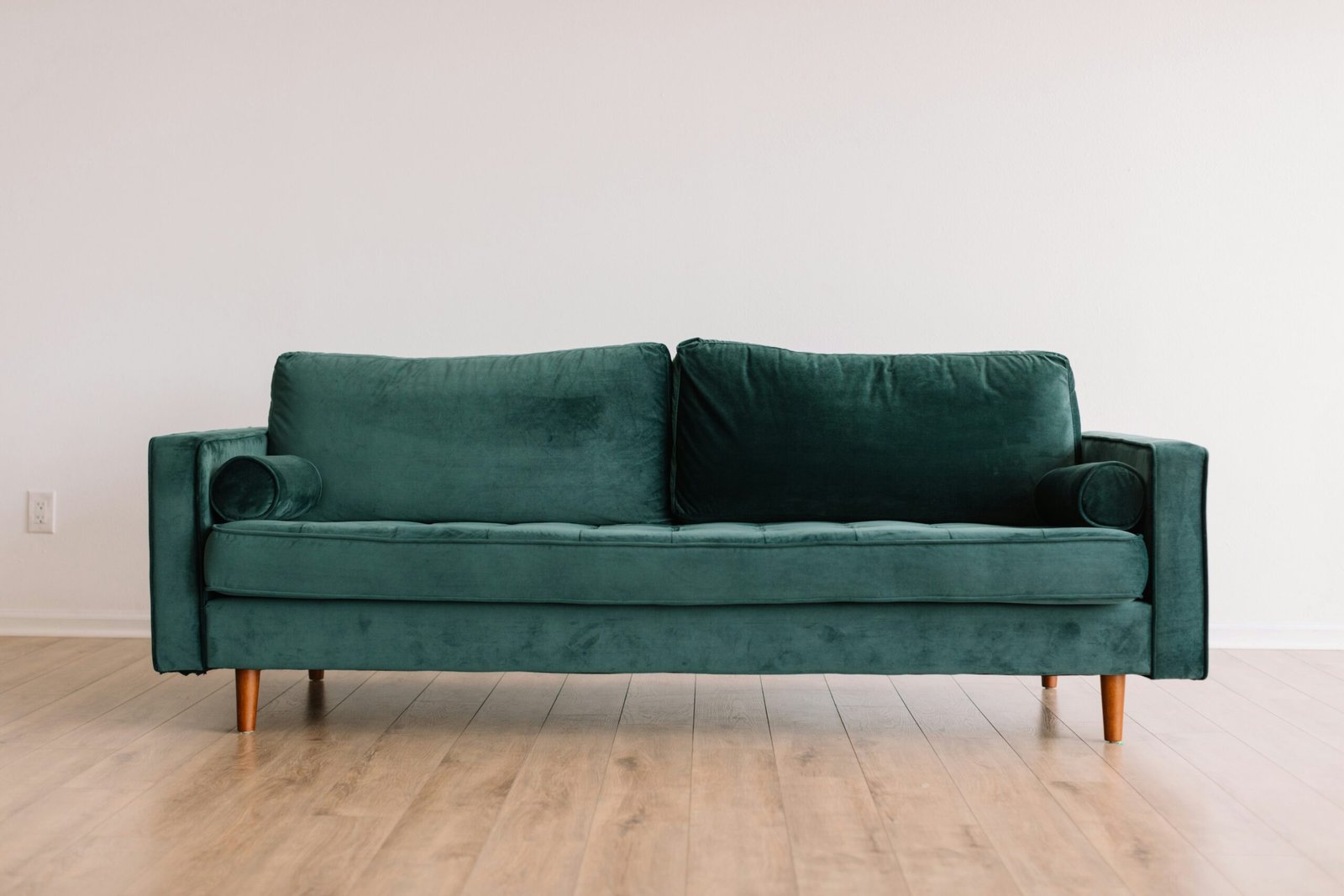Taking care of your chairs is essential if you want them to last for years to come. By regularly maintaining your chairs, you can extend their lifespan and keep them looking as good as new. From cleaning and inspecting to tightening screws and lubricating joints, this article will guide you through the simple steps to ensure that your chairs remain in top-notch condition. With a little effort and regular attention, you can enjoy the comfort and durability of your chairs for a long time.

This image is property of images.unsplash.com.
Importance of Regular Maintenance
Regular maintenance is key to maintaining the quality and lifespan of your chairs. By taking the time to care for your chairs properly, you can enjoy their comfort and functionality for years to come. In this article, we will explore the various aspects of chair maintenance and provide valuable tips on how to preserve the appearance, prevent costly repairs, and ensure the safety of your chairs.
Prolongs Chair Lifespan
One of the primary benefits of regular maintenance is that it prolongs the lifespan of your chairs. By regularly cleaning and inspecting your chairs, you can identify and address any issues before they escalate into major problems. This proactive approach helps to prevent wear and tear, maintaining the structural integrity of your chairs and extending their overall lifespan.
Preserves Chair Appearance
Regular maintenance plays a vital role in preserving the appearance of your chairs. Over time, chairs can accumulate dust, stains, and general wear. By implementing a regular cleaning routine, you can remove dirt and debris from your chairs, keeping them looking fresh and clean. Additionally, by following proper cleaning techniques, you can avoid damaging the upholstery or the wood finish, ensuring that your chairs retain their original beauty.
Avoids Costly Repairs
Neglecting regular maintenance can lead to more costly repairs down the line. Issues such as loose screws, broken parts, or damaged upholstery may seem minor at first, but if left unattended, they can worsen over time and require professional interventions. By consistently checking and addressing any potential issues, you can save yourself from the hassle and expense of extensive repairs or even the need for chair replacements.
Ensures Safety
Regular maintenance is essential to ensure the safety of individuals using the chairs. Loose screws, unstable joints, or worn-out components can pose a risk to anyone sitting on the chair. By routinely inspecting the chairs and tightening or replacing any loose or broken parts, you can provide a safe seating experience for yourself, your family, or your guests.
Cleaning and Dusting
Proper cleaning and dusting play a significant role in maintaining the cleanliness and longevity of your chairs. Here are some essential tips for cleaning different types of chairs:
Vacuuming Upholstered Chairs
Upholstered chairs require regular vacuuming to remove dust, pet hair, and other particles that can accumulate on the fabric. Start by using the upholstery attachment on your vacuum cleaner to gently remove any loose debris. Be sure to pay attention to crevices and corners where dust tends to collect. For any stains or spills, refer to the section on removing stains for further guidance.
Wiping Down Wooden Chairs
Wooden chairs are susceptible to dust and grime build-up, so regular wiping is essential. Use a soft, damp cloth or a microfiber cloth to gently wipe down the surfaces of the chair, including the seat, backrest, and arms. Avoid using excessive moisture or harsh cleaning products, as they can damage the wood finish. If you notice stubborn dirt or stains, refer to the section on removing stains for specific instructions.
Removing Stains
Stains can be a common occurrence on chairs, especially upholstered ones. To remove stains, start by blotting the affected area with a clean cloth to absorb any excess liquid. Avoid rubbing or scrubbing, as this can spread the stain further. Depending on the type of stain, you can use various cleaning solutions such as mild detergent mixed with water or specialized upholstery cleaners. Always test any cleaning solution on a small, inconspicuous area of the chair before applying it to the stain directly.
Dusting Chair Legs and Frame
In addition to cleaning the seating area, it is important to regularly dust the chair legs and frame. Use a dry cloth or a feather duster to remove any dust or cobwebs from these areas. Pay special attention to the joints and crevices where dust tends to accumulate. Regular dusting helps maintain the overall cleanliness and appearance of the chair.

This image is property of images.unsplash.com.
Checking and Tightening Screws
Screws play a critical role in the stability and structural integrity of chairs. Regularly checking and tightening screws is an important part of chair maintenance. Here’s what you need to know:
Inspecting Screws Regularly
Take the time to inspect all the screws and joints of your chairs on a regular basis. Look for any signs of looseness, rust, or damage. Loose screws can cause instability and compromise the safety of the chair. By identifying any potential issues early on, you can prevent further complications and ensure the proper functioning of the chair.
Tightening Loose Screws
If you come across any loose screws during your inspection, it is essential to tighten them promptly. Use a screwdriver that matches the size and type of screw head to ensure a secure fit. Remember not to overtighten, as this can strip the screw or damage the surrounding wood. Aim for a firm, snug fit that eliminates any wobbling or instability.
Replacing Worn or Damaged Screws
In some cases, screws may become worn or damaged beyond repair. If you notice any stripped or broken screws, it is crucial to replace them promptly. Visit your local hardware store to find suitable replacement screws that match the specifications of your chair. By addressing worn or damaged screws, you can maintain the structural integrity of the chair and prevent further damage.
Repairing or Replacing Loose or Broken Parts
Over time, chairs may experience wear and tear, leading to loose or broken parts. To ensure the longevity and functionality of your chairs, it is important to address these issues promptly. Here’s how to go about it:
Assessing Chair Components
Begin by thoroughly inspecting the chair for any loose or broken parts. Common areas of concern include chair legs, armrests, backrests, and joints. Pay attention to any signs of instability or unusual movement. By identifying the specific components that require repair or replacement, you can address these issues effectively.
Fixing Loose Joints
If you notice any loose joints, there are several methods you can try to fix them. One option is to use wood glue or adhesive specifically designed for furniture repairs. Apply the glue to the joint, carefully following the manufacturer’s instructions. Then, use clamps or heavy objects to hold the joint firmly in place until the glue dries. Alternatively, you can use screws or nails to reinforce the joint and provide additional stability.
Replacing Broken or Damaged Parts
In cases where a part is broken beyond repair or severely damaged, it may be necessary to replace it. Contact the manufacturer or a local furniture repair professional to inquire about replacement parts for your specific chair model. Follow the provided instructions or seek professional help to ensure correct installation and restoration of the chair’s functionality.

This image is property of images.unsplash.com.
Lubricating Moving Parts
Chairs with moving parts, such as swivel chairs or recliners, require regular maintenance to keep them functioning smoothly and prevent squeaks or stiffness. Here’s how to lubricate the moving parts effectively:
Identifying Moving Parts
Take a close look at your chair and identify the areas that require lubrication. These may include swivel mechanisms, reclining mechanisms, or any other components that facilitate movement. Refer to the chair’s instruction manual if available, or consult with a furniture repair expert for guidance on the specific parts that require lubrication.
Applying Lubricant
Choose an appropriate lubricant designed specifically for furniture or moving parts. Avoid using general-purpose oils or sprays, as they may attract dust or cause damage. Follow the application instructions provided with the lubricant. Apply a small amount to the moving parts, ensuring thorough coverage. Move the parts back and forth or follow the chair’s specific instructions to distribute the lubricant evenly.
Preventing Squeaks and Stiffness
Regularly lubricating the moving parts of your chair helps to prevent squeaks and stiffness. This not only enhances the comfort of your seating experience but also ensures the proper functioning and longevity of the chair. Make lubrication a part of your regular maintenance routine to keep your chair in optimal condition.
Protecting Chair Surfaces
To maintain the appearance and condition of your chairs, it is important to protect them from potential damage. Here are some tips to help you protect chair surfaces:
Using Chair Covers or Protectors
Consider using chair covers or protectors to shield the upholstery or wood finish from spills, stains, or excessive wear. Chair covers are available in a variety of materials and designs to suit different aesthetics. Look for covers that are easy to clean and maintain, ensuring they can be easily removed and washed if necessary.
Avoiding Direct Sunlight
Direct sunlight can cause fading and discoloration of chair upholstery or wood finish over time. To prevent such damage, position your chairs away from direct sunlight or use curtains, blinds, or UV-blocking window films to filter the incoming light. This simple step can significantly prolong the vibrancy and quality of your chairs.
Restricting Pets and Children
Pets and young children can unintentionally cause damage to chairs through scratching, chewing, or spills. Consider limiting access to chairs or establish clear boundaries to prevent accidents or mishaps. If your pets tend to shed, regularly clean the upholstery or use protective covers to minimize the accumulation of fur.
Avoiding Excessive Weight and Rough Handling
Chairs have weight limits specified by the manufacturer, and exceeding these limits can potentially lead to structural damage or even collapse. To ensure the longevity and safety of your chairs, follow these guidelines:
Recommended Weight Limits
Always adhere to the recommended weight limits specified by the manufacturer. Exceeding these limits can put excessive strain on the chair’s structure and compromise its integrity. If you’re unsure about the weight capacity of a specific chair, refer to the manufacturer’s website or contact their customer service for information.
Using Chair Appropriately
Use your chairs for their intended purpose and avoid putting unnecessary strain on them. For example, using a dining chair as a step stool or leaning back too far in a chair not designed for reclining can lead to damage. Encourage proper usage among family members and guests to prevent accidents and extend the lifespan of your chairs.
Lifting Chairs Properly
When moving or repositioning chairs, make sure to lift them correctly. Bend your knees and use your leg muscles to lift the chair rather than straining your back. Avoid dragging or shoving chairs across the floor, as this can damage the legs or scratch the surface. By handling chairs with care, you minimize the risk of accidents and maintain their structural integrity.
Inspecting and Repairing Upholstery
The upholstery of your chairs requires special attention to maintain its appearance and functionality. Regular inspection and timely repairs can help prolong the lifespan of your upholstery. Here’s what you need to know:
Checking for Tears or Frays
Inspect the upholstery of your chairs on a regular basis for any signs of tears, frays, or loose threads. These issues, if left unattended, can worsen over time, resulting in significant damage. If you notice any such damage, consider repairing it promptly to prevent further deterioration.
Repairing Small Damages
Minor tears or frays can often be repaired without professional help. Depending on the extent of the damage and the type of upholstery material, you can use various methods to fix the issue. Small tears can be stitched or patched, while frayed edges can be trimmed and sealed. If you’re unsure about the repair process, consult with a professional upholsterer for guidance.
Considering Professional Upholstery Cleaning
Regular cleaning of chair upholstery is vital to maintain hygiene and remove stains. While you can undertake routine cleaning yourself, it is also recommended to consider professional upholstery cleaning periodically. Professional cleaners have the expertise, equipment, and specialized cleaning products to deep-clean and restore the appearance of your upholstery effectively.
Storing Chairs Properly
Proper storage of chairs is essential, especially when they are not in use for an extended period of time. Follow these guidelines to ensure your chairs remain in optimal condition while in storage:
Clean and Dry Chairs Before Storage
Before storing chairs, make sure they are thoroughly cleaned and dry. Remove any dust, stains, or spills, as these can attract pests or cause damage over time. Leave the chairs in a well-ventilated area until they are completely dry, as storing damp chairs can lead to mold or mildew growth.
Avoid Humidity and Moisture
High humidity or exposure to moisture can cause significant damage to chairs, especially those made of wood or upholstered with fabric. When selecting a storage location, choose an area that is dry and free from excessive humidity. Consider using moisture-absorbing packets or desiccants to further protect the chairs from moisture-related issues.
Using Chair Covers or Bags
To provide an additional layer of protection, consider using chair covers or bags during storage. These covers help prevent accumulation of dust and protect the chairs from potential scratches or damage. Be sure to use covers or bags that are suitable for the chair’s material and size, ensuring a secure fit.
Seeking Professional Help
While regular maintenance can be done by most homeowners, there may be instances where professional intervention or advice is necessary. Here are some scenarios where seeking professional help is recommended:
Consulting Furniture Repair Experts
If you encounter complex repair issues or structural problems with your chairs, it is best to consult a furniture repair expert. These professionals have the skills and knowledge to assess and address a wide range of chair-related problems. By seeking their expertise, you can ensure proper repairs and restore the functionality and appearance of your chairs.
Getting Chairs Professionally Serviced
Periodically having your chairs professionally serviced can provide a comprehensive inspection and maintenance routine beyond your regular maintenance efforts. Furniture professionals can deep-clean upholstery, lubricate moving parts, and perform any necessary repairs or adjustments. Consider scheduling professional servicing as part of your chair maintenance plan to extend their lifespan and prevent potential issues.
Exploring Warranty or Maintenance Plans
If your chairs are still under warranty or if you have purchased a maintenance plan, it is advisable to take advantage of these benefits. Contact the manufacturer, retailer, or the service provider to inquire about available warranty coverage or maintenance plans. These programs often offer additional protection and services, giving you peace of mind and ensuring the longevity of your chairs.
In conclusion, regular maintenance is crucial for extending the lifespan of your chairs. By implementing a comprehensive maintenance routine that includes cleaning, inspecting and tightening screws, repairing or replacing loose or broken parts, lubricating moving parts, protecting chair surfaces, avoiding excessive weight and rough handling, inspecting and repairing upholstery, storing chairs properly, seeking professional help when needed, you can significantly enhance the durability, appearance, and safety of your chairs. With proper care, your chairs will continue to provide comfort and functionality for years to come.
